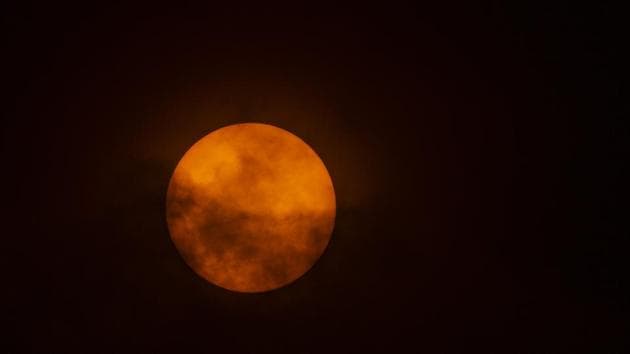Last solar eclipse of 2020 to occur today, will not be visible in India
A solar eclipse occurs when the Moon comes between the Sun and the Earth, blocking out the Sun’s rays and casting a shadow on parts of Earth. It occurs twice a year but can go up to five times in very rare scenarios.
The last solar eclipse (called Surya Grahan in Hindi) of this year will occur on Monday. The total eclipse will begin at 7:30 pm (IST) and last till 12:23 am (IST) on Tuesday. It will be visible in Argentina, Chile and other regions of South America where the Sun will be completely blocked.

A solar eclipse occurs when the Moon comes between the Sun and the Earth, blocking out the Sun’s rays and casting a shadow on parts of Earth. It occurs twice a year but can go up to five times in very rare scenarios.
Total Solar Eclipse of December 14, 2020:
This year’s total solar eclipse will not be visible in India as the Sun would have been set for the day when the celestial event begins. The magnitude of this eclipse is 1.02 and will last for a duration of 2 minutes and 10 seconds with the Sun completely covered with the Moon’s shadow. People have been advised to not directly look at the Sun during the eclipse as it can cause severe eye damage. Those who wish to take a direct view of the eclipse should use adequate protection such as eclipse glasses or pinhole projector.
What are the type of solar eclipses:
There are four types of solar eclipses, namely total, parital, annular and hybrid.
1. A total solar eclipse occurs when the darkest part of the Moon’s shadow temporarily blocks the rays of the Sun from reaching Rarth, which leads to a state of darkness. This celestial event can only be seen from a specific region of the planet.
2. A partial solar eclipse occurs when the Moon partially covers the Sun’s disk. The alignment of the Moon, the Sun and the Earth is not a perfect straight line.
Also Read| Solar Eclipse 2020: After a dazzling meteor shower, skygazers to see another astronomical event
3. An annular eclipse occurs when the Moon and the Sun are in exact alignment with the Earth. In this event , the apparent size of the moon is smaller than that of the Sun’s which leaves the outer edges of the Sun visible as a ring around the moon.
4. A hybrid eclipse is a combination of an annular and a total solar eclipse. Depending on the location of observation along the central eclipse path, a hybrid eclipse may look like an annular or total eclipse.



